
cefix (CEFIXIME)
Introduction to cefix
Cefix, also known as Cefixime, is a type of antibiotic used to treat a variety of bacterial infections. It belongs to a class of drugs called cephalosporins, which work by stoppin... See More

What is Cefix?
Cefix is an antibiotic used to treat bacterial infections such as bronchitis, gonorrhea, and infections of the ears, throat, and urinary tract. It belongs to the cephalosporin class and works by disrupting the formation of the bacterial cell wall, leading to the death of the bacteria. It is not effective against viral infections like the common cold or flu.

What is the usual dose of Cefix?
For adults, the recommended dose of Cefix is 400 mg daily, which can be taken as a single dose or split into two doses of 200 mg each. For children aged 6 months and older, the dose is typically 8 mg/kg/day, which can be given as a single daily dose or divided into two doses. It's important to follow the doctor's prescription for the exact dosage.

How do I take Cefix?
Cefix can be taken with or without food. It is important to take it at the same time each day to maintain consistent levels in the body. There are no specific food restrictions while taking Cefix, but it is important to follow the doctor's instructions and complete the full course of the medication.

For how long do I take Cefix?
The typical duration of Cefix treatment is usually 7 to 14 days, depending on the type and severity of the infection. It's important to complete the full course of antibiotics as prescribed by your doctor, even if you start feeling better before finishing the medication.

What disease or symptom is Cefix used for?
Cefix is indicated for treating bacterial infections such as bronchitis, gonorrhea, and infections of the ears, throat, tonsils, and urinary tract. It is also used for sinus infections in penicillin-allergic patients, pneumonia, shigella, salmonella, and typhoid fever. It is important to use Cefix only for infections caused by susceptible bacteria.

How long does it take for Cefix to start working?
Cefix typically begins to work within a few days of starting treatment. Patients should start to feel better during the first few days, but it is important to complete the full course of antibiotics as prescribed to ensure the infection is fully treated and to prevent antibiotic resistance.

Is Cefix effective?
Cefix is a cephalosporin antibiotic that works by inhibiting bacterial cell wall synthesis, leading to the death of the bacteria. It is effective against a range of bacterial infections, including those affecting the respiratory tract, urinary tract, and gonorrhea. Clinical trials and post-marketing studies have demonstrated its efficacy in treating these infections.

How do I know if Cefix is working?
The benefit of Cefix is evaluated through clinical improvement in symptoms of the infection being treated. Laboratory tests may also be conducted to confirm the eradication of the bacteria. If symptoms do not improve or worsen, it is important to consult a doctor for further evaluation and possible adjustment of treatment.

How does Cefix work?
Cefix works by inhibiting the synthesis of the bacterial cell wall, which is essential for bacterial growth and survival. By disrupting this process, Cefix causes the bacteria to die, effectively treating the infection. It is effective against a range of bacteria but not against viruses.

Who should avoid taking Cefix?
Cefix is contraindicated in individuals with known allergies to cephalosporins. Caution is advised for those with a history of penicillin allergy due to possible cross-reactivity. It may cause Clostridium difficile-associated diarrhea, so any severe diarrhea should be reported to a doctor. Dose adjustments are necessary for patients with renal impairment.

Can I take Cefix with other prescription drugs?
Cefix may interact with carbamazepine, leading to elevated levels of the latter. It can also increase prothrombin time when taken with anticoagulants like warfarin, potentially increasing bleeding risk. Patients should inform their doctor of all medications they are taking to manage potential interactions effectively.

Can Cefix be taken safely while pregnant?
Cefix is categorized as Pregnancy Category B, indicating that animal studies have not shown harm to the fetus, but there are no well-controlled studies in pregnant women. It should be used during pregnancy only if clearly needed, and the potential benefits justify the potential risks to the fetus.

Can Cefix be taken safely while breastfeeding?
It is not known whether Cefix is excreted in human milk. Therefore, caution is advised when administering Cefix to breastfeeding mothers. The decision to continue or discontinue breastfeeding should consider the importance of the drug to the mother and any potential risks to the infant.

Is Cefix safe for the elderly?
Elderly patients can generally use Cefix at the same dosage as younger adults. However, they should be monitored for any side effects, as they may be more susceptible to adverse reactions. It's important to assess renal function in elderly patients, as dose adjustments may be necessary for those with impaired kidney function.

How should I store Cefix?
Cefix tablets, capsules, and chewable tablets should be stored at room temperature, away from excess heat and moisture. Liquid forms should be kept at room temperature or refrigerated and used within 14 days. Always keep medications out of reach of children and dispose of any unused medication properly.

Does Cefix make people tired or drowsy?
Cefix does not commonly cause drowsiness, sleepiness, or fatigue. If you experience any unusual tiredness or fatigue while taking Cefix, it is advisable to consult your doctor. They may need to evaluate your symptoms to determine if they are related to the medication or another underlying condition.

Does Cefix cause stomach upset?
Common gastrointestinal side effects of Cefix include diarrhea, nausea, and abdominal pain. Diarrhea is reported in about 16% of patients, while nausea occurs in about 7%. If you experience severe or persistent gastrointestinal symptoms, contact your doctor. They may adjust your treatment or provide remedies to alleviate the symptoms.

Does Cefix affect sleep?
Most people tolerate Cefix well, and difficulty sleeping is not commonly reported. There are no well-documented effects of Cefix on sleep. If you experience sleep issues, consult your healthcare provider to rule out other causes.

Does Cefix make it hard to think or concentrate?
Most people tolerate Cefix well, and difficulty thinking or concentrating is not commonly reported. There are no well-documented cognitive side effects associated with Cefix. If you experience any issues with concentration, consult your healthcare provider to rule out other causes.

Does Cefix affect mood?
Most people tolerate Cefix well, and changes in mood or increased anxiety are not commonly reported. There are no well-documented mental health side effects associated with Cefix. If you experience any mood changes, consult your healthcare provider to rule out other causes.

Does Cefix interfere with sexual function?
Most people tolerate Cefix well, and sexual side effects are not commonly reported. There are no well-documented effects of Cefix on sexual function. If you experience any issues, consult your healthcare provider to rule out other causes.

Does Cefix affect appetite?
Most people tolerate Cefix well, and changes in appetite are not commonly reported. There is no well-documented effect of Cefix on appetite. If you notice any significant changes in your appetite, consult your healthcare provider to rule out other causes.

Does Cefix cause weight gain?
Most people tolerate Cefix well, and weight loss or weight gain is not commonly reported. There is no well-documented effect of Cefix on body weight. If you notice any significant changes in your weight, consult your healthcare provider to rule out other causes.

Does Cefix cause headaches?
Headaches are a less common side effect of Cefix. If you experience a headache while taking this medication, it is usually mild and temporary. However, if the headache is severe or persistent, you should contact your doctor for advice. They may suggest an over-the-counter pain reliever or evaluate if the headache is related to the medication.

Does Cefix limit driving?
Cefix does not typically cause symptoms that would impair the ability to drive. However, if you experience dizziness or any other side effects that affect your concentration or alertness, it is advisable to avoid driving or operating heavy machinery until you feel better. Always prioritize safety and consult your doctor if you have concerns.

Is it safe to drink alcohol while taking Cefix?
Most people tolerate Cefix well, and occasional alcoholic drinks should not affect the way this medicine works. There are no well-established interactions between Cefix and alcohol. However, it's always a good idea to drink alcohol in moderation and consult your healthcare provider if you have any concerns.

Is it safe to drink coffee or tea while taking Cefix?
Most people tolerate Cefix well, and it should not limit your ability to drink caffeinated beverages such as coffee or tea. There are no known interactions between Cefix and caffeine that would interfere with the medicine's effectiveness or cause harm. You can enjoy your usual amount of coffee or tea while taking this medication.

Is it safe to exercise while taking Cefix?
Cefix does not typically limit the ability to exercise. However, if you experience any side effects such as dizziness or fatigue, it may be wise to avoid strenuous activities until you feel better. Always listen to your body and consult your doctor if you have concerns about exercising while on this medication.

What are the most common side effects of Cefix?
A side effect is an unwanted effect of a medicine. Common side effects of Cefix include diarrhea, nausea, abdominal pain, headache, and dizziness. These effects are usually mild and may not be directly related to the medicine. It's important to talk to your healthcare provider if you experience new symptoms and not to stop the medication without their advice.

Does Cefix have adverse effects?
Adverse effects are unwanted or harmful effects caused by a medicine. Cefix can cause side effects like diarrhea, nausea, abdominal pain, and headache, which are generally mild. Rare but serious adverse effects include severe allergic reactions, such as rash, itching, or swelling, and should be reported to a doctor immediately. It's important to talk to your healthcare provider about any new symptoms and not to stop the medication without their advice.

Is Cefix addictive?
Cefix is not addictive and has no known potential for dependence. It does not cause physical or psychological dependence, so there are no behaviors or warning signs to watch for in terms of addiction. You can take Cefix as prescribed by your doctor without worrying about addiction.

Does Cefix have any safety warnings?
Cefix has safety warnings related to allergic reactions, which can be severe. Symptoms like rash, itching, swelling, or difficulty breathing require immediate medical attention. It may also cause diarrhea, which could indicate a new infection. If you experience severe diarrhea, contact your doctor. Always inform your healthcare provider about any other medications you're taking to avoid interactions. Monitoring for unusual symptoms is important while on Cefix.

Is it safe to stop Cefix?
Cefix is typically used for treating temporary or acute conditions like infections. Stopping it abruptly can lead to the infection not being fully treated, which might cause it to return or worsen. There are no withdrawal symptoms, but it's crucial to complete the prescribed course. Always consult your doctor before stopping any medication to ensure it's safe and appropriate for your condition.

How do I dispose of Cefix?
If you can, bring unused medicines to a drug take-back program or collection site at a pharmacy or hospital. They will dispose of this medicine properly so they don't harm people or the environment. If you can't find a take-back program, you can throw most medicines in the trash at home. But first, take them out of their original containers, mix them with something undesirable like used coffee grounds, seal the mixture in a plastic bag and throw it away.

What are Cefix possible harms and risks?
The most frequently reported side effects of Cefix include diarrhea (16%), nausea (7%), and abdominal pain (3%). Serious adverse effects can include allergic reactions, such as rash, itching, and difficulty breathing. If any serious side effects occur, it is crucial to seek medical attention immediately.
Available in 6 variations
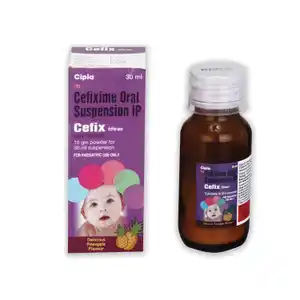
Cefix 50mg Syrup
Cefixime (50mg)
bottle of 30 ml Syrup

Cefix 400mg Tablet
Cefix 400mg Tablet
Cefixime (400mg)
strip of 4 tablets
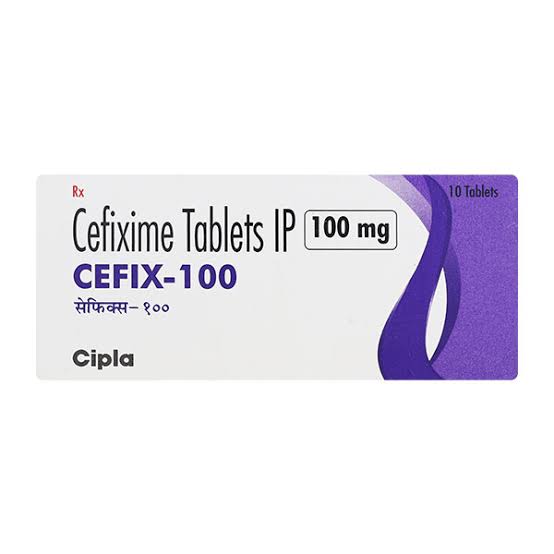
Cefix 100mg Tablet 10s
Cefixime (100mg)
strip of 10 tablets
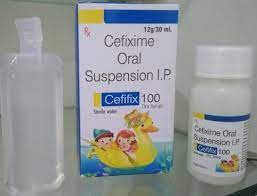
Cefix 100mg Dry Syrup 30ml
Cefixime (100mg)
bottle of 30 ml Dry Syrup
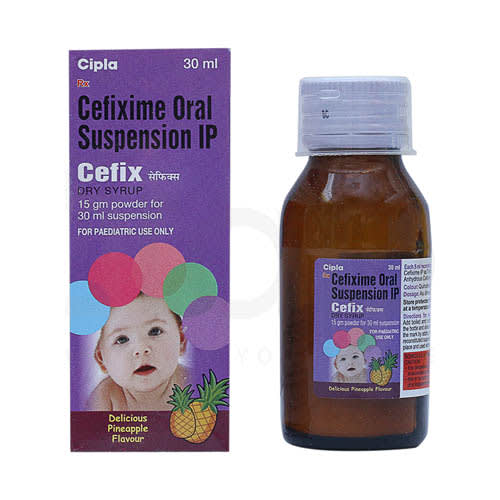
Cefix Syrup
Cefixime (50mg)
bottle of 30 ml Dry Syrup
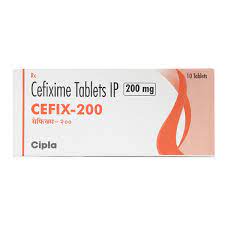
Cefix 200mg Tablet 10s
Cefixime (200mg)
strip of 10 tablets








.svg)
